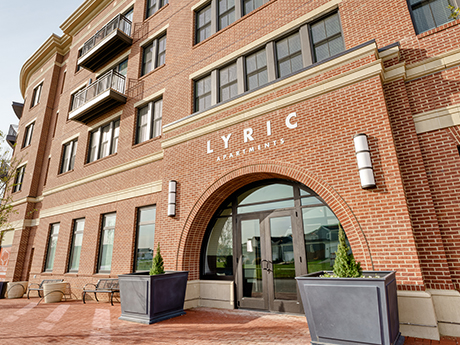By Louis Rogers of Capital Square
Navigating the complex tax rules of a Section 1031 exchange can be a complicated experience. For many, investing in a Delaware Statutory Trust, or DST replacement property, simplifies and streamlines the process so that more investors can enjoy the benefits of Section 1031.
Introduction to Section 1031 Exchanges
Section 1031 of the Internal Revenue Code, commonly referred to as a “tax-deferred exchange,” provides for the complete deferral of federal and state taxes on the sale of investment real estate. The seller must reinvest the net sale proceeds into a qualifying replacement property, which can be any type of real property. The gain that would have been recognized in a taxable sale is deferred until the replacement property is sold in a taxable transaction.

Section 1031 has been in the tax code since 1921. Historically, most exchangers have acquired a “whole” property, meaning they acquired an entire replacement property. However, starting in 2002, many exchangers have acquired a fractionalized interest in their replacement property, first using the Tenant in Common (TIC) structure and, more recently, the DST structure.
Instead of acquiring a whole property, they acquire a fractionalized interest or a percentage of a replacement property originated by a specialized real estate company called a “sponsor.” The goal is to provide a high-quality Section 1031 replacement property with a sponsor providing all of the services necessary to make the real estate a passive, turn-key investment.
Let’s say the exchanger sells an investment property and has $500,000 of net proceeds held by a qualified intermediary to purchase their replacement property. The exchanger could acquire a $500,000 whole replacement property. Alternatively, the exchanger could acquire an interest in a high-quality DST property, for example, a 1 percent interest in a $50 million DST that owns a Class A apartment community in a top market.
Key Attributes of DSTs
The DST structure has a number of key attributes and advantages over a whole property investment:
Qualification as Like-Kind Property under Section 1031. The starting point is qualification for tax deferral under Section 1031. The IRS/Treasury issued a Revenue Ruling in 2004 setting forth the requirements for a DST to qualify for tax deferred treatment under Section 1031. Rev. Rul. 2004-86. Sponsors follow the Revenue Ruling in structuring their DST programs and provide a “should qualify” tax opinion from a reputable law firm for each DST offering.
Higher Quality Replacement Property. Most DST properties are high-quality real estate, commonly referred to as “investment grade,” often with a purchase price of $50 million or more. Not many exchangers have enough proceeds from their exchange to acquire a property of this magnitude. The benefits are many — the best real estate in a top market, with excellent tenants and top-tier managers. By investing in a DST, even a small exchanger is able to acquire an investment grade replacement property. Think about an exchanger who disposed of a simple rental house and acquired an interest in an investment grade replacement property with a purchase price of $50 million.
Diversification. Diversification is a key feature of DSTs. In acquiring a whole property, the exchanger is concentrated in a single replacement property. The investor has put all their eggs in one basket, to use the folksy expression. This is known as “concentration risk.” If the sole replacement property goes bad, the exchanger could lose their entire investment.
By contrast, DSTs have a small minimum investment (frequently as little as $50,000), which means that even a small exchanger can acquire a number of DST replacement properties to better diversify their investment. An exchanger with $250,000 of exchange proceeds can invest in three, four or even five DSTs to obtain greater diversification. If one property goes bad, they have others to fall back on and avoid a total wipeout, reducing the risk of real estate investing.
Turn-key Investment. Many real estate investors are tired of the tenants, toilets and trash of active real estate management. They would like a passive investment that pays a monthly distribution but does not require taking phone calls from tenants when the roof leaks. The DST structure is a passive investment with a sponsor handling all aspects from acquisition, financing, asset management, accounting and sale of the property at the end of the holding period, all on a turn-key basis. Acquiring a DST frees real estate owners from the burdens of management.
Due Diligence Completed and Real Estate Acquired by Sponsor. In acquiring a whole property, the exchanger must conduct their own due diligence. In acquiring a DST, the due diligence has been completed by the sponsor and is readily available in an electronic drop box. The property has been previously acquired by the sponsor, reducing the risk of a failed exchange.
Extensive Inventory of Available DST Properties. In acquiring a whole property, the exchanger must find a replacement property on their own. This can be an onerous task for regular folks, especially in a hot real estate market. By contrast, DSTs are readily available to suit the desires of most investors. Many DSTs acquire multifamily properties, others acquire industrial, retail, medical, office or self-storage properties in many locations across the nation. At any given time, there are dozens of desirable DST properties to suit the needs of most exchangers.
Monthly Cash Flow. DSTs typically make distributions to investors on a monthly basis by direct deposit. Unlike waiting to collect the rent on a whole property, DST distributions are paid monthly.
Simplified Closing Process. Most DST sponsors have a largely automated, simplified closing process making it possible to close in a matter of days. This helps exchangers put their money to work quicker than when acquiring a whole property.
Ability to Invest the Exact Amount. Exchangers have an amount in escrow with their qualified intermediary that needs to be invested in the replacement property. Any funds not invested will be taxable. With a DST, an exchanger can invest their exact amount of proceeds and not have any excess funds that would be taxable.
Also, DSTs can be used for any leftover funds. For example, let’s say the exchanger wants to acquire a whole property but will have $X left over. The exchanger can acquire a DST for the leftover funds and complete a 100 percent exchange without any tax.
Debt Issues. Under Section 1031, if the exchanger has debt on their relinquished property, they must have equal (or greater) debt on the replacement property. In a whole property exchange, the exchanger must source the debt on their own, which can be an onerous process for regular folks who are not real estate professionals. In a DST exchange, the sponsor sources the debt and delivers the DST properties with debt in place to simplify the exchange process.
The debt on DST programs is nonrecourse, meaning the exchanger is not personally liable to repay the debt; the DST property serves as collateral for the debt. If loan guarantees are required, the sponsor provides the guarantees. And investors are not required to complete loan applications or provide financial statements.
Liability Protection. DST investors have no personal liability from the DST or the property; their assets are protected from DST liabilities. There is no need to form a limited liability company (or other entity) for liability protection.
Confidentiality. DST investments are confidential — investors are not named in the land records.
Identification Issues. DSTs can be named in the 45-day identification letter as a backup in case the primary replacement property does not close.
Cash Investors. DSTs can be acquired by cash investors who are not doing an exchange. As an added benefit, cash investors can structure a 1031 exchange when the DST property is sold at a later date, deferring the taxable gains.
Investor Protection/Regulatory Regime. DST investments have a number of protections and a regulatory regime designed to protect investors.
Full and Fair Disclosure. In acquiring real estate, the legal standard is caveat emptor or “let the buyer beware.” This means the buyer of real estate must do their own due diligence investigation or run the risk. DSTs are a hybrid; they are real estate for exchange purposes and also a security for securities laws purposes, where the standard is full and fair disclosure.
This means DST sponsors must make full and fair disclosure of all material facts, including risk factors, the business plan, financing, tenants, market information, economic data and the sponsor’s background. This is typically done in the Private Placement Memorandum and is intended to provide a complete picture of the investment, both good and bad, so prospective investors can make an informed investment decision.
FINRA Regulatory Regime. DSTs are typically sold by securities broker-dealers who are licensed by the Financial Industry Regulatory Authority (FINRA). Under FINRA rules, broker-dealers must make an independent investigation of the sponsor and each DST offering before making a recommendation to a prospective investor.
The broker-dealers must reach their own independent conclusion that the offering is fully and fairly disclosed, meets industry standards and is suitable for the investor. In addition, FINRA maintains a rigorous arbitration system to provide investors with a forum for disputes.
Outlook
For the reason summarized above, DSTs have become the structure of choice for fractionized Section 1031 exchange programs. The general outlook for DSTs is positive — strong increase in DST investments is expected as interest rates moderate and more real estate owners become seller/exchangers.
— By Louis Rogers, founder and co-CEO, Capital Square


